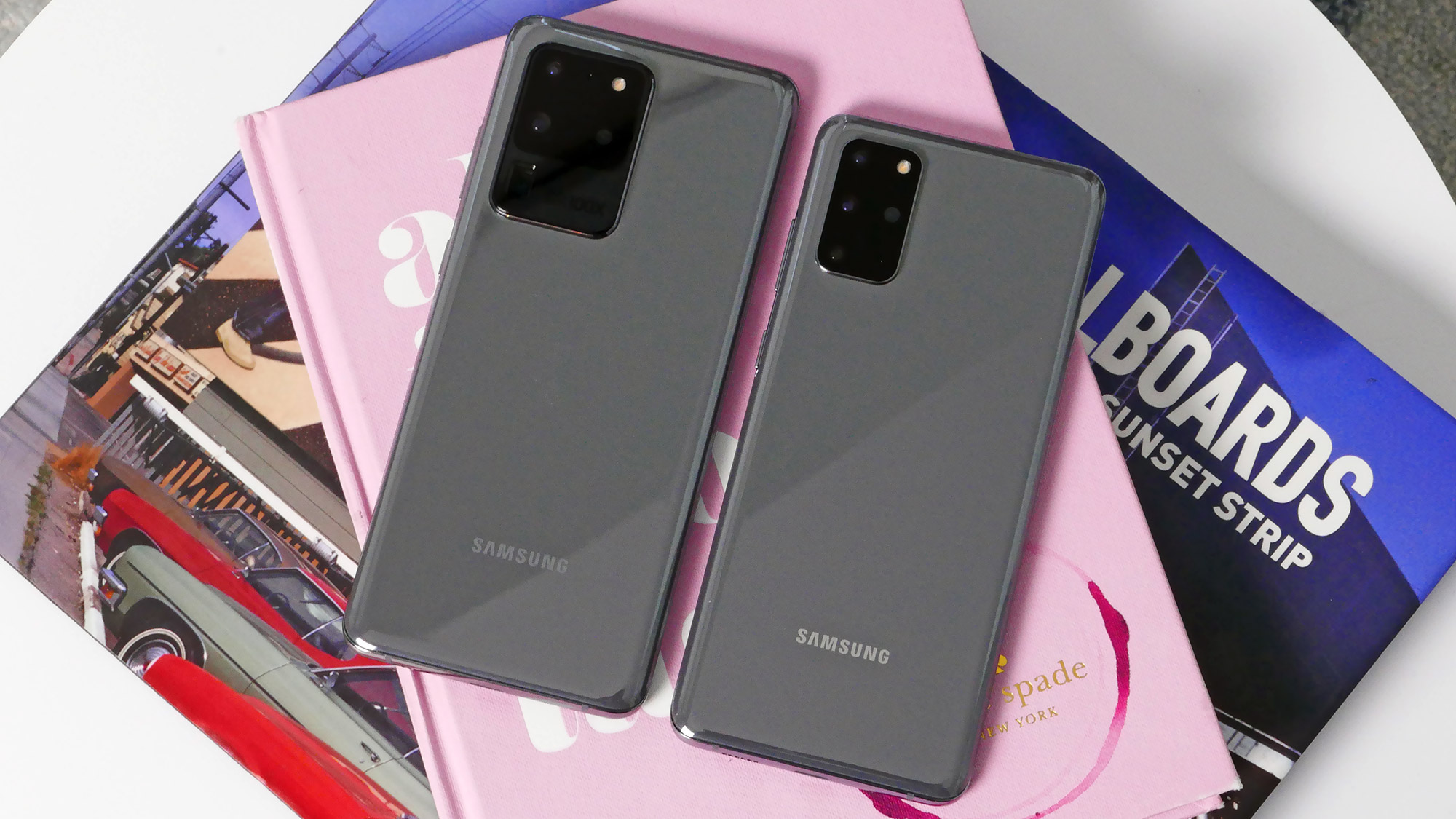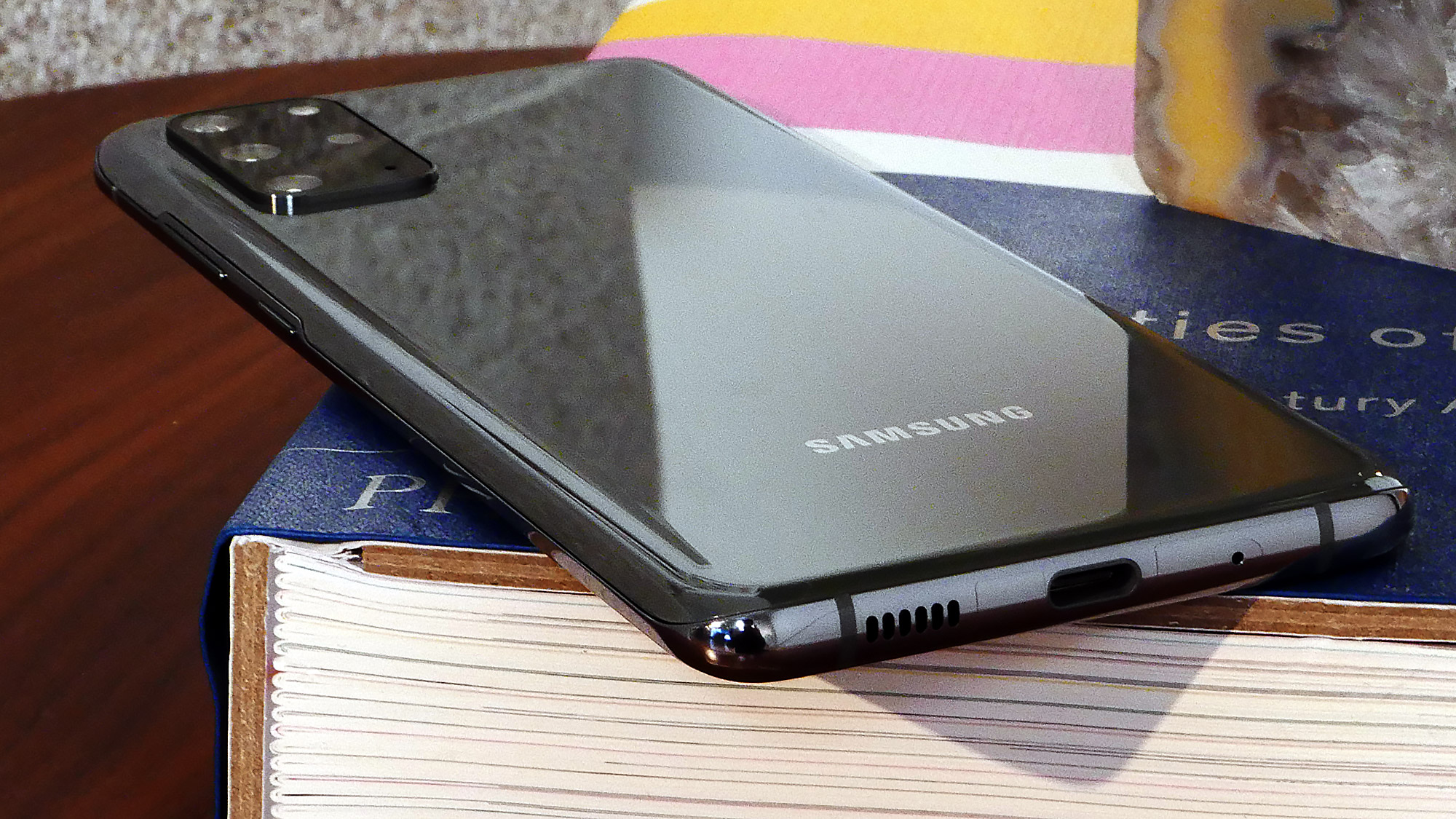Galaxy S20 Ultra vs Galaxy S20 Plus: All the differences explained
Inside what makes Samsung's upcoming superphone so special

It's not enough to launch one new model of your flagship smartphone these days — you've got to unveil three. That's exactly what Samsung has done for its Galaxy S20 lineup, which includes the entry-level Galaxy S20, mid-grade Galaxy S20 Plus and range-topping Galaxy S20 Ultra.
Unsurprisingly, it's the S20 Ultra that has commanded the most attention of the trio, both because it's the most expensive model, and because it includes a monster quad-lens camera, led by an astonishing 108-megapixel sensor.
But imaging isn't the only differentiating factor between the S20 Ultra and Plus. Now that Samsung has taken the wraps of the Galaxy S20 lineup, let's take a closer look at all the differences separating the S20 Ultra and S20 Plus, and offer our preliminary recommendation for which you should spring for if you're eyeing a new Samsung handset this year. (And we reserve the right to change our opinion once we actually get a chance to review the phones more thoroughly.)
If you're on the fence about whether to upgrade from your Galaxy S10, or perhaps whether last year's model is worth the discount, check out our handy Galaxy S20 versus Galaxy S10 face-off. We also compare the Galaxy S20 versus the Galaxy S20 Plus, to explore the differences between those two devices.
Galaxy S20 Ultra and S20 Plus specs
| Header Cell - Column 0 | Galaxy S20 Plus | Galaxy S20 Ultra |
|---|---|---|
| Display (resolution, max refresh rate) | 6.7 inches (3200x 440, 120Hz) | 6.9 inches (3200x1440, 120Hz) |
| CPU | Snapdragon 865 | Snapdragon 865 |
| RAM | 12GB | 12GB/16GB |
| Storage | 128GB | 128GB, 512GB |
| Rear Cameras | Quad-lens: 12-MP main, 64-MP 3x optical telephoto, 12-MP ultrawide, time-of-flight | Quad-lens: 108-MP main, 48-MP 10x lossless hybrid telephoto, 12-MP ultrawide, time-of-flight |
| Front Camera | 10-MP | 40-MP |
| Dust/Water Resistance | IP68 | IP68 |
| Battery Size | 4,500 mAh | 5,000 mAh |
| Size | 6.4 x 2.9 x 0.3 inches | 6.5 x 2.9 x 0.3 inches |
| Weight | 6.5 ounces | 7.7 ounces |
S20 Ultra vs S20 Plus: Design and display
Aside from the aforementioned camera discrepancies, screen size is one of the major differences between the Galaxy S20 Ultra and S20 Plus. Where the S20 Plus offers a large 6.7-inch display, the Ultra variant packs a massive 6.9-inch panel — surely one of the largest ever in a smartphone.
Normally, we'd say lovers of big screen phones would be keen on watching the Ultra model closely, but 6.9 inches might be pushing it a bit far. Regardless of the variant you choose, the Dynamic AMOLED displays in all Galaxy S20 devices have a resolution of 3200 x 1440, with a 120Hz refresh rate when the panel is programmed to display at full HD resolution, below the native scaling. (If you opt for that 1440p picture quality, the refresh rate will be halved to the standard 60Hz to preserve battery life.)

Moving past the size, the S20 Ultra and Plus look about the same from the outside. Samsung has decided to ditch the steeply-sloped Infinity display glass for this generation, opting for a flatter aesthetic like what's commonly seen on Google's Pixel line. What's more, all three S20 models have centrally-mounted hole punch-style selfie cameras, in the vein of the Galaxy Note 10. (Also in the vein of the Note 10, they lack headphone jacks; RIP.)
Get instant access to breaking news, the hottest reviews, great deals and helpful tips.
From the back, the Ultra and Plus devices look a little different, owing to the former's supercharged camera. The Ultra's stack devotes prime real estate to the phone's 48-MP, 100x "Space Zoom" shooter.
S20 Ultra vs S20 Plus: Cameras
Both the S20 Ultra and S20 Plus feature quad-lens rear cameras — but that's where the similarities end. The S20 Ultra's main lens is tied to Samsung's own 108-megapixel Isocell Bright HMX sensor, which has been said to rivals the sensors in some standalone cameras in terms of size.
Beyond that, the S20 Ultra carries a 48-MP telephoto with 4x optical zoom (or up to 100x digital), a 12-MP ultrawide camera for landscapes, and a time-of-flight sensor rounding out the repertoire. That kind of zoom power is unheard of in smartphones today; Huawei's 50x digital Super Zoom in the P30 Pro is about the only feature that rivals it in a leading flagship handset.

The S20 Plus replaces the 108-MP main shooter with a more conventional 12-MP one, yet will employ a 64-MP telephoto with 3x optical zoom and 30x digital power. Interestingly, this telephoto shooter won't actually incorporate a lens length that's markedly different from the primary one; rather, it will use cropping to deliver simulated zoom, which it will be able to do thanks to the wealth of pixels captured by the that 64-MP sensor.
The 12-MP ultrawide and time-of-flight sensor have been carried over across both the Ultra and Plus phones, as has their shared 10-MP front-facing camera. Samsung has made a major push toward improving video with all of the new models, adding a Pro Video mode with a wealth of adjustable settings, 8K video recording at 24 frames per second, and a 4K 60 fps option to achieve parity with Apple's iPhone 11 Pro.
S20 Ultra vs S20 Plus: Performance
Here's one area where you shouldn't be penalized for choosing the cheaper S20 Plus in lieu of the pricier S20 Ultra. All Galaxy S20 models will use Qualcomm's Snapdragon 865 system-on-chip, which, in addition to being the year's fastest processor for Android phones, will also enable 5G connectivity on all major carriers.
Both the S20 Plus and S20 Ultra will come with 12GB of RAM by default, though one of the S20 Ultra variants will offer 16GB of RAM, for an additional $200.
Both the S20 Plus and S20 Ultra can be had with either 128GB or 512GB of storage. If you don't want to pay for all that storage upon on purchasing your Galaxy, don't sweat it; once again, they all have microSD card slots for expandability.

S20 Ultra vs S20 Plus: Battery
The Galaxy S20 range will need all the power it can get to keep their 5G radios and 120Hz screens humming along. To that end, we're seeing a major increase in battery capacity across all Galaxy S20 models, with the 6.9-inch S20 Ultra once again unsurprisingly leading the charge.
That model carries a huge 5,000-mAh battery, while the S20 Plus will opt for a 4,500-mAh unit. They also come with 25- and 45-watt fast charging adapters, though Samsung will only pack the speedier power delivery option with the Ultra variant, on account of its larger capacity.
S20 Ultra vs S20 Plus: Price and availability
By now, you've probably gathered that the S20 Ultra and S20 Plus are packing some pretty bleeding-edge tech — and with those features comes a high price. How high? $1,199 for the S20 Plus and $1,399 for the S20 Ultra.
For reference, Apple's iPhone 11 Pro Max starts at $1,099, but can get up to $1,449 for the highest-capacity, 512GB model. Samsung has also introduce a new foldable alongside its Galaxy S flagships, called the Galaxy Z Flip, that will cost $1,380. Even just last year, the Galaxy S10 5G was sold through major carriers for $1,299.

Samsung evidently isn't afraid of charging top dollar for its top-of-the-line mobile hardware, but the company is at least looking to offer a small break to users, in that it will give buyers a free pair of Galaxy Buds Plus with preorder of an S20 Plus or S20 Ultra. The new buds will cost $149, which is $20 more than their predecessor.
You can pre-order both the Galaxy S20 Plus and S20 Ultra starting on Feb. 21, with the phones arriving in stores on March 6.
Outlook
The Galaxy S20 Ultra looks to be the model to go for if you're the type of user who really loves to take lots of photos with your smartphone, or perhaps if you watch a ton of media while on the go. Its price undoubtedly will make it prohibitively expensive for some, though we're eager to see what kind of photos that 108-MP camera and 10x optical zoom lens can capture for the extra dough you're shelling out.
On the other hand, if you're the kind of user who wants a flagship camera but doesn't feel compelled to spend an extra $200 on one, the Galaxy S20 Plus' quad-lens imaging stack should suffice, and still deliver excellent zoom shots with its rumored 3x optical power.
Stay tuned for our full review of all of Samsung's Galaxy S20 devices ahead of the phones arriving in stores on March 6.
Adam Ismail is a staff writer at Jalopnik and previously worked on Tom's Guide covering smartphones, car tech and gaming. His love for all things mobile began with the original Motorola Droid; since then he’s owned a variety of Android and iOS-powered handsets, refusing to stay loyal to one platform. His work has also appeared on Digital Trends and GTPlanet. When he’s not fiddling with the latest devices, he’s at an indie pop show, recording a podcast or playing Sega Dreamcast.
